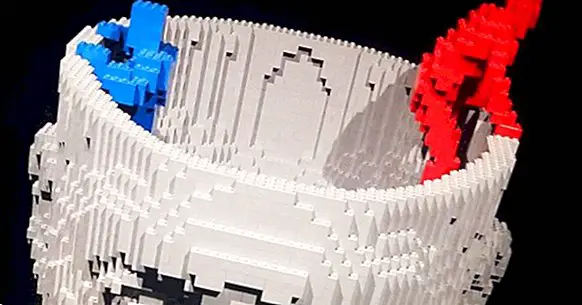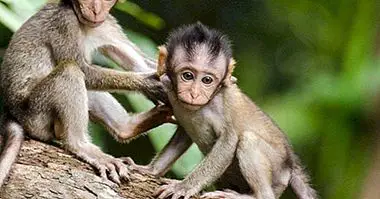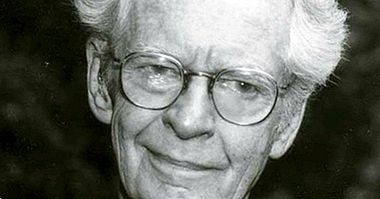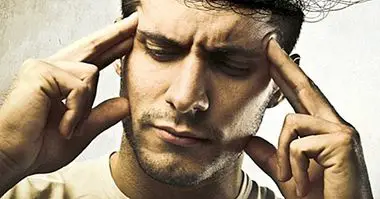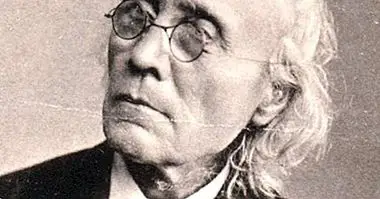The theories of the dual process: what they are and how they explain the human mind
Think. To reason. To learn. We process information constantly, and with it our brain operates in different ways in order to be able to stay alive, subsist and act adaptively in the environment. But how do we do it?. Some theories in this regard speak of a single mechanism or process by which we reason, while others propose the existence of more than one.
Among the different models and theories that have been developed, especially in this last case, we find the theories of the dual process , name that actually refers to a set of more or less known theories about how we process information, and about which we will talk throughout this article.
- Related article: "Are we rational or emotional beings?"
Theories of the dual process: basic definition
It receives the name of theory of the dual process to the general theory, or rather said set of general theories (since in fact we could get to speak until of a dozen of theories), characterized by the consideration that the superior cognitive capacities as the Cognition or reasoning exist as a result not of one but two basic processes or systems , whose interaction allows us to generate thoughts and mental products.
These two processes have different characteristics in terms of the way they process information, the speed at which they do it or the number and type of resources they use. It should also be noted that it is generally considered that one of the processes or systems is implicit and unconscious while the other processes the information explicitly and being voluntary and requires a conscious effort on our part. Also, our experiences and biology participate and modify the ability to carry out each of these two processes, so that there are no two people with the same performance or capacity.
It should be noted that the theory of the dual process that we are referring to is based on or focuses on the existence of processes necessary at the time of having reason and decision-making capacity as well as when carrying out certain behaviors. However, within the different theories of the existing dual process we can extrapolate the existence of two processes in different areas, such as in the case of learning or even economics, marketing (It would influence different ways of persuading others) and society.
The two systems
The two systems that are considered from the perspective of the theory of the dual process can vary depending on the type of theory we are talking about, but nevertheless we can consider that broadly speaking we would be talking about two specific types of system.
System 1
System 1 would correspond to what in everyday language, according to Kahneman, we would call intuition. It would be a totally unconscious information processing system, in which the information is worked implicitly and in the background. The performance of this system is fast and precise few resources, working at automatic level . It does not require logic and uses a parallel processing of information. It is also based more on the innate association between stimuli and usually can not be expressed verbally. However, however unconscious it is, it is affected by previous experience and emotion.
We are facing a system that allows a quick and almost immediate reaction to the environment, in such a way that it allows us to make decisions that can save our lives. It is the system that allows us to form a first impression of the situation and act accordingly, being the decision making based more on the contextual and in our internal nature and not in logic. It is the oldest mechanism phylogenetically speaking, forming part not only of our species but of the rest of animals.
System 2
The implementation of this system involves decision making and processing, which requires a conscious and voluntary process. It is what Kahneman identifies with true reasoning. It is considered that this system is typically human, being one of the most novel at the phylogenetic level.
There is great implication of the neocortex. It is based on the logic and precise of an explicit processing, being able to work abstract and symbolic elements such as language and working serially . It requires a large amount of cognitive resources and time to be used, and allows the conscious analysis and control of thought and behavior.
Although system 2 does not allow an immediate response and in imminent situations it may not be fast enough to guarantee survival, it is certainly useful to allow reflection on the different courses of action, the implications of each situation and work with more abstract elements. This means that we are capable of planning and predicting, as well as evaluating not only emotionally but also logically the different options.
- Related article: "How do we think?" The two thought systems of Daniel Kahneman "
The need for both ways of thinking
These two systems are very different from each other, but it is their combination that makes us the way we are. Both systems have their strengths and weaknesses, complementing each other to favor our survival and adaptation to the environment. So, try find a balance between the two is ideal , because it pushes the performance at the same time that our actions can be inhibited and modified in order to achieve goals to obtain concrete objectives.
The dual process theory of Groves and Thompson
We have already indicated that the idea of the existence of information processing based on two different processes has been used in multiple areas. Groves and Thompson own one of the best known in the field of psychology.
The dual process theory of these two authors is based on the effects of exposure to stimuli repeatedly over time , from a perspective based more on unconscious processes. These authors consider that the repeated experience of a specific event or stimulation generated can generate modifications in the behavior so that it is stimulated or inhibited.
Specifically, he talks about habituation as the process by which a stimulus loses strength to stimulate its presentation repeated over time, so that the reaction to the same amount of stimulation will be less in time. This process explains the acquisition of very diverse automatisms , at the same time that it allows the acquisition of complex capacities when determining the basic steps for it of smaller quantity of resources. An example could be learning to speak or to walk, and in general also associative processes.
On the other hand, some stimulations may cause the opposite effect to occur, this other process being called sensitization. In this case, each presentation of the same stimulus will have increasing strength and generate greater effects. This will make each time the stimulus is more activating for the subject .
It is usual for this process to appear in emotionally stimulating situations for the subject and in which some kind of motivation appears, as well as when the stimulus in question is of a very high intensity. It can serve us for example to maintain the level of alarm to loud noises that could be indicating the proximity of a danger.
As with the aforementioned dual processing theory, both processes are not necessarily mutually exclusive they appear together, joining to generate a concrete reaction or consequence. However, this theory of dual processing differs from that previously presented in the fact that in both cases we would be facing unconscious processes in the background, both forming part of the system 1.
Bibliographic references
- Domjan, M. (2005). Principles of learning and behavior. (5th ed.). Madrid: Thomson.
- Kahneman, Daniel (2011). Thinking, fast and slow (1st ed.). New York: Farrar, Straus and Giroux
- Seoane, G .; Valiña, Mª D .; Rodríguez, Mª S .; Martín, M. and Feraces, Mª J. (2007). Individual differences in hypothetico-deductive reasoning: importance of flexibility and cognitive abilities. Psicothema, Vol. 19 (2), 206-211. Available at: //www.infocop.es/view_article.asp?id=1440

